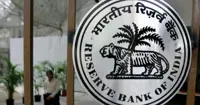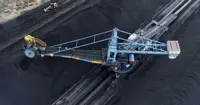China's economic stimulus to help pull Asia-Pacific out of gloom by 2010: World Bank
07 Apr 2009
 A bottoming out of China's economy by mid-2009 provides a ray of hope for countries in the East Asia and the Pacific region to emerge out of an a surge in joblessness resulting from the global slowdown, says the World Bank's latest half-yearly assessment of the region's economic health.
A bottoming out of China's economy by mid-2009 provides a ray of hope for countries in the East Asia and the Pacific region to emerge out of an a surge in joblessness resulting from the global slowdown, says the World Bank's latest half-yearly assessment of the region's economic health.
The latest East Asia and Pacific Update, titled `Battling the Forces of Global Recession', says a recovery in China – fueled largely by the country's huge economic stimulus package – is likely to begin this year and take full hold in 2010, potentially contributing to the region's stabilisation, and perhaps recovery.
However, the slow rate of growth in China would delay recovery in smaller East Asian nations which have been most affected by the crisis, the report said.
China's $587 billion stimulus will help it shift growth to personal consumption and spending on services, the World Bank said in its twice-yearly report.
The only stumbling block is China's still-heavy reliance on exports to world markets that continue to contract, the Update warns. A truly sustainable recovery in the East Asia and Pacific region ultimately depends on developments in the advanced economies, it added.
In the face of much weaker exports and a slowing down in domestic demand,
The World Bank expects real GDP growth in developing East Asia to reach 5.3 per cent in 2009, down from 8.0 per cent in 2008 and 11.4 per cent in 2007. The Bank had last month downgraded its forecast for China's growth to 6.5 per cent this year from 13 per cent in 2007.
The region's low income countries are expected to be among the worst affected by the slowdown and the limited room for government intervention to help those in need. Cambodia is likely to experience the strongest decline in growth because of declines in the garment and tourism sectors, while Lao, Mongolia, Papua New Guinea and Timor-Leste will be especially hard hit due to lower commodity prices, the report said.
''The measures the authorities have taken to counteract the crisis across the region are helping to cushion the impacts on the most vulnerable people,'' World Bank's vice president for the East Asia and Pacific region, Jim Adams, said. ''With unemployment likely to increase – especially as jobs in manufacturing and construction disappear - social protection efforts will have to expand to meet very real human needs,'' he added.
Adams is departing for the 13th ASEAN finance ministers' meeting in Pattaya, Thailand, later this week.
Weaker growth is expected to slow the pace of poverty reduction in the region, with over 10 million more people likely to stay below the poverty line this year compared to estimates of a year ago, the Update says. Cambodia, Malaysia, Thailand and Timor-Leste are projected to see absolute increases in poverty this year.
The report says the region is stepping-up efforts to support the region's poor and vulnerable people, especially in the middle-income countries. In late 2008, China provided a one-time cash transfer to 74 million people, including to millions of rural householders, and introduced tax cuts as well as a major health reform package to increase access to healthcare for the poor.
Indonesia has reached out to 19 million poor households by reviving a targeted cash assistance programme and the Philippines is boosting the number of poor people covered by its recently introduced conditional cash transfer programme.
''There is no doubt that the East Asia and Pacific region is confronting very difficult times,'' said Vikram Nehru, the World Bank's chief economist for the region. ''The countries that are able to tackle short-term challenges while staying focused on longer-term priorities will likely emerge better placed after the crisis to resume growth.''
As the world economy slowly recovers, East Asian and Pacific countries can achieve high rates of growth if they boost their competitiveness, penetrate new markets and support their companies to innovate rather than imitate, Nehru said.
The World Bank report said it is also supporting East Asia and Pacific countries in its own ways as they face the impacts of the financial crisis through increased financing and stepped-up policy advice on ways to protect the poor and vulnerable.




.webp)


























